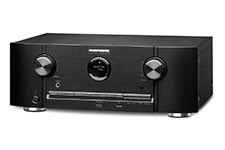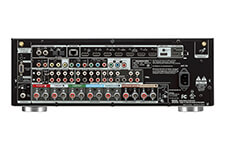AVR
Stands for "Audio/Video Receiver." An AVR, often called a receiver, is the central routing and processing component in a home theater. It can receive signals from connected components and route them to different devices. AVRs are also sometimes referred to as "amplifiers," since one of their primary functions is to amplify an audio signal before sending it to the speakers.
In a typical home theater setup, all devices are connected to the HDMI ports on the back of the AVR. The audio is routed to speakers, such as Dolby 5.1 surround system (five speakers plus one subwoofer). The video is typically output to a television. In a modern home theater, the TV may serve as a monitor since the audio is processed by the AVR and video input is handled by a cable box, Apple TV, or another device. Smart TVs are an exception since they are both an input device (sending audio and video data to the AVR) and an output device (displaying video from built-in apps or other devices.
History of AVRs
Early receivers were not called AVRs since they only handled audio signals. The inputs and outputs were primarily analog, except for a optical audio connection such as a Toslink or S/PDIF port. Eventually, receivers were built to route video signals as well as audio.
As digital devices became more common, receivers started to serve a more primary role as the central digital controller of a home theater system. Since HDMI enables bidirectional communication, devices can now communicate with each other. For example, an AVR can tell a television to turn on or off and a TV can tell an AVR to change the volume.
Modern AVRs
Modern AVRs are far more functional than older receivers that simply amplified signals from radio transmissions, audio tapes, and CD players. They now serve as the control center for most home theaters. Many AVRs also support wireless technologies such as Wi-Fi and Bluetooth, which allows you to stream music wirelessly to speakers connected to the receiver.
 Test Your Knowledge
Test Your Knowledge
